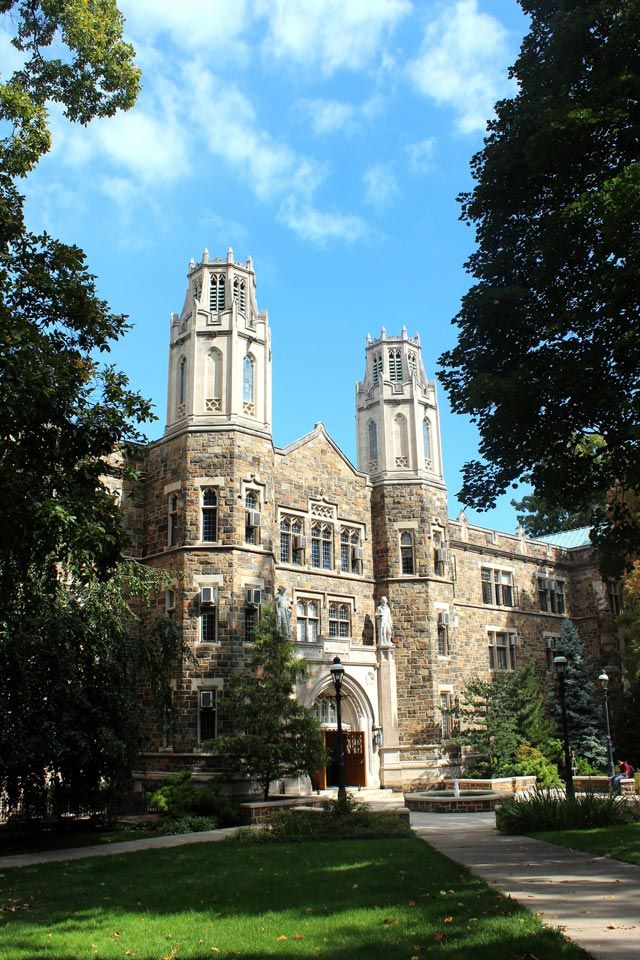Researcher also uses wireless sensing to assess damage from the 2011 Virginia earthquake.
Assessing the structural integrity of bridges could one day be as simple as making a quick scan with a network of cell phones. Similarly, determining the damage a building has sustained from an earthquake could be simplified by taking readings from inexpensive wireless sensors that have been embedded into the structure.
The technologies are the focus of an investigation by Shamim Pakzad, the P.C. Rossin Assistant Professor of Civil and Environmental Engineering and an expert in wireless sensing and structural health monitoring.
“My research is something that 10 or 15 years ago would have been considered outside the mainstream of civil or structural engineering,” Pakzad says. “Now it is becoming part of the curriculum, which is very exciting.”
Currently, determining a bridge’s structural health can be a costly effort requiring lane closures and “a major deployment of equipment and devices,” Pakzad says. Using moving sensors could eliminate these inconveniences.
“We are working on the possibility of putting sensors into a robot or vehicle crossing a bridge as part of the flow of traffic,” he says. “We’re trying to assess the integrity of a structure with these mobile devices.” Such technology could also help in traffic control and modeling, he adds.
In 2006, Pakzad helped install 320 sensors—each the size of a matchbox— onto the Golden Gate Bridge. Data, however, had to be collected at scheduled times and the network couldn’t consider the impact of earthquakes.
His current research takes seismic factors into account. Pakzad is collaborating with a team from the University of Notre Dame that has developed a reinforced-concrete, coupled shear wall system for earthquake-resistant buildings. The team is testing the wall at Lehigh’s ATLSS(Advanced Technology for Large Structural Systems) Engineering Research Center.
In addition to embedding hundreds of sensors into the concrete, Pakzad will use a noncontact sensing system called digital image correlation to predict damage to the structure.
“When this system is subjected to earthquake shakings, the coupling beams dissipate a lot of the vibration energy, the damage will be concentrated at locations that can be fixed without extensive repairs or retrofitting, and the system will self-center,” Pakzad says. “Predicting the location and severity of damage in these systems is a critical aspect in their application.”
Strain gauges and other technologies that assess a structure’s health are not new, says Pakzad, but engineers until now have lacked the capability to accurately translate sensor data. “We want to instrument a building with sensors, and then, after an event, be able to infer automatically from the data whether a building is safe for immediate occupancy or not. That’s something that doesn’t exist now.”
With a grant from NSF, Pakzad is also using wired and wireless sensing to assess earthquake damage at the Washington Monument and the Smithsonian Institution’s Museum Support Center in Suitland, Md. The facility holds nearly 40 percent of the Smithsonian’s collection not on display. Pakzad is collaborating with Jim Ricles, the Bruce G. Johnston Professor of Structural Engineering at Lehigh, and with researchers from Virginia Tech. The team is specifically assessing the interaction with soil that occurred at each structure following the Virginia earthquake in 2011.
By attaching sensors to each structure, researchers “are characterizing the dynamic properties of the structures and those of the soil to study their correlation,” Pakzad says. “We’ve looked at the soil profile of both sites and, based on geotechnical analysis, have estimated the ground motion that these two buildings experienced.
“We’re interested in identifying the design shortcomings in buildings on the East Coast when it comes to earthquake hazards, and in developing ways of addressing these shortcomings in existing and future structures. Soil-structure interaction has been studied at other places, but on the East Coast its influences haven’t been fully considered.”
Pakzad, who teaches a course in sensors and systems, seeks to motivate his students with the latest technology. “This is a very fast-developing area of research, and our students compete for jobs in several industries. I’m here because I want to see growth in students. That’s one of the most rewarding things for me at Lehigh.”

